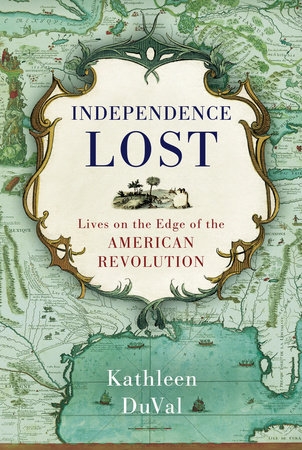Independence Lost [Book Review]

Certainly, the rebelling colonists in the North and the residents of the Gulf Coast treated the revolution in different ways. Initially, they saw the revolution as the one more imperial war for getting more lands and treasures. Even though the Gulf Coast was the only one site that was outside the rebelling colonies, later, it also joined the United States. The British, Spanish, French, and Native Americans inhabited that area. The population was truly diverse and it should be noted that a vast majority of the people living there had no interest in the British attempts to regulate its colonists. Moreover, they did not want to rebel. However, when the war began, many people started to consider is as the source of dangers and opportunities for them and their families. Therefore, they started to satisfy their own ambitions, as well the ambitions of their families and ethnic groups.
In her famous work, Independence Lost: Lives on the Edge of the American Revolution, a talented historian, Kathleen DuVal, presents a vivid and detailed analysis of the war and its consequences for the people living in the territories with the crossing interests. Noteworthy, the fundamental long-term need of all nations was to gain more lands, where the extended population could live. In the short-term perspective, these people had to decide whether they needed to get involved in the conflict or not. Besides, they had to choose the side to support and understand how to protects their lives and property.
In the 18th century, independence was not the common goal. Of course, for most people living on the continent, interdependence was a much more realistic goal. However, on the Gulf Coast, the Native-American leaders tried to achieve the sovereign independence. After winning the American Revolution, the rebelling people improved their varieties of independence at the cost of Native Americans, whose ancestors inhabited this land for many ages. Despite the fact that they lived on this land for many years and had the rights to use these lands as they wanted, the Indians were not invited into the significant meetings, on which the questions of the end of the war or joining the union of sovereign states were discussed.
In some cases, the war allowed to get the individual liberties and even freedom from slavery, though, it was not a direct path to the overall abolition of slavery. The status of white women did not undergo the significant changes, neither positive nor negative, and only the men could take the life-changing decisions. Although the official documents say that almost a half of the population was female, only a few women are mentioned in terms of building the nation. Kathleen DuVal masterfully relates the fates of her characters to the history of the whole nation. She tells that the major part of the lands in the region was under the possession of Indians. Therefore, the success or failure of the French, British, or Spanish troops was dependent from the decision of the Native Americans to join the war or not. In this regard, the author mentions two famous Indians. The first one is Payamataha, a leader of Chickasaws tribe, who took multiple life-changing decisions. He was a good diplomat and a spiritual leader of his ethnic group, who strived to get the independence for his people taking the position of the peaceful coexistence with other tribes. During the 1760s and 1770s, he tried to maintain peace with other tribes even the ones that were their long-time enemies. The forces that were beyond his control later became the source of problems. The other leader discussed in the book is Alexander McGillivray, who supported British during the war. What is more, he promoted Creek independence and supported a confederation of Indian nations that wanted to protect their land.
As for the other characters, one should also mention Oliver Pollock, a prosperous merchant in Havana and New Orleans, who did business successfully both with the French and Spanish. He was appointed by The Continental Congress as a commercial agent in Louisiana. Pollock invested all his faith into the rebels in the American Revolution. However, his wife, Margaret O’Brien, believed that her husband’s decision negatively changed the life of their family. Isabella Chrystie and James Bryce supported the British. They lived in West Florida and firmly believed that the independence was no more than the result of the order set by the British.
Although Petit Jean was enslaved, he played a much more significant role in post-1763 compared to other slaves. He was a cattle driver, who knew the peculiarities of the whole landscape around him, and thus, was entrusted with the great responsibility. Indeed, the slaves were loyal to their families and the common goal but not to their masters.
One more character, Amand Broussard, was a Louisiana rancher. His family was expelled by the British from Acadia. Though the Acadians succeeded in doing business the British in West Florida, they did not forget the bad treatment they received from the British.
To summarize, in this book, the author writes, “Struggling for the American independence really meant struggling for the right balance of dependence and independence. Both the European empires and Native Americans wanted to reach different balances and, therefore, both lost in North America.” This story is truly incredible and it should be noted that Kathleen DuVal tells it brilliantly.
There are no published comments.
New comment